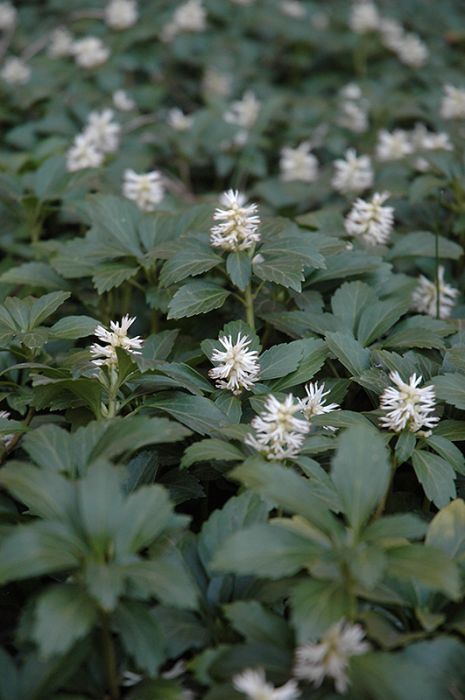Pachysandra, Japanese Spurge



Out of stock
Coming soon, still growing- Sun Preference
- Part-Sun, No-Sun
- Bloom Time
- May, June
Description
A premium evergreen groundcover for shade or deep shade. Vigorous, shiny, toothed leaves and white flowers in the spring. Does best in moist, welldrained organic soils.
Minnesota's Largest Selection of Perennials
Discover an unparalleled selection of perennials at Gertens! With the largest variety in Minnesota, we offer endless options of colorful perennials, natives, and pollinator plants to beautify your garden year after year. From vibrant flowers to lush foliage, our perennials are perfect for adding beauty and charm to your outdoor space. Visit Gertens today and see why we're known as Minnesota's Destination Garden Center!
Details
Japanese Spurge | Pachysandra terminalis
Height: 8 inches
Spread: 18 inches
Sunlight: part shade to full shade
Hardiness Zone: 4a
Brand: Gertens
Description:
A highly regarded evergreen groundcover, exceptional performance in deep shade, actually dislikes hot sun, one of the few that does well beneath mature shade trees; prefers highly organic, acidic soils, will benefit from snow cover in colder regions
Ornamental Features
Japanese Spurge features tiny spikes of white flowers rising above the foliage in mid spring. Its glossy narrow leaves remain forest green in color throughout the year.
Landscape Attributes
Japanese Spurge is a dense herbaceous evergreen perennial with a ground-hugging habit of growth. Its medium texture blends into the garden, but can always be balanced by a couple of finer or coarser plants for an effective composition.
This plant will require occasional maintenance and upkeep, and should not require much pruning, except when necessary, such as to remove dieback. Deer don't particularly care for this plant and will usually leave it alone in favor of tastier treats. Gardeners should be aware of the following characteristic(s) that may warrant special consideration;
- Spreading
Japanese Spurge is recommended for the following landscape applications;
- Groundcover
- Naturalizing And Woodland Gardens
Planting & Growing
Japanese Spurge will grow to be about 8 inches tall at maturity, with a spread of 18 inches. Its foliage tends to remain low and dense right to the ground. It grows at a slow rate, and under ideal conditions can be expected to live for approximately 20 years. As an evegreen perennial, this plant will typically keep its form and foliage year-round.
This plant does best in partial shade to shade. It prefers to grow in average to moist conditions, and shouldn't be allowed to dry out. It is particular about its soil conditions, with a strong preference for poor, acidic soils, and is able to handle environmental salt. It is highly tolerant of urban pollution and will even thrive in inner city environments, and will benefit from being planted in a relatively sheltered location. Consider covering it with a thick layer of mulch in winter to protect it in exposed locations or colder microclimates. This species is not originally from North America. It can be propagated by division.
More Information
| Common Family Name | Japanese Spurge |
|---|---|
| Gerten Grown Plants | Gerten Grown Plants |
| Sun Preference | Part-Sun, No-Sun |
| Bloom Time | May, June |
| Mature Spread (Range) | 12" - 24" |
| Mature Height (Range) | 7-12" |
| USDA Hardiness Zone | 4, 5, 6, 7, 8 |


